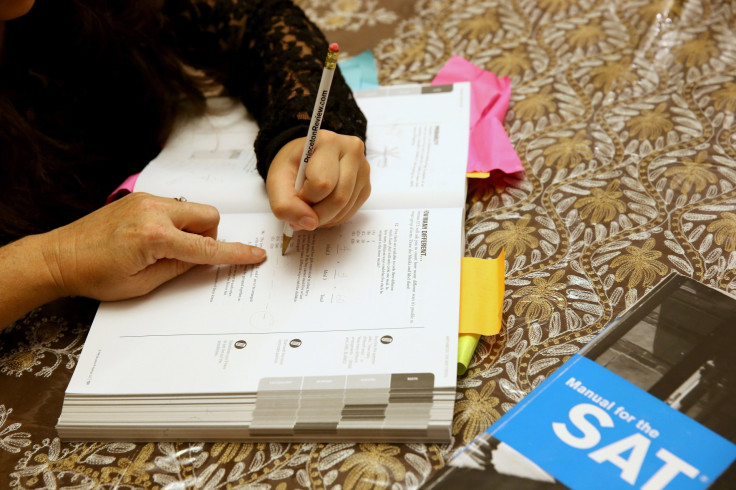New SAT Tips: Learn What's Different And How To Practice For The College Readiness Exam

The new SAT has officially arrived. Starting Saturday, students around the world began taking a revised version of the college readiness exam. It has fewer trick questions and more emphasis on reading, but it’s still sure to cause anxiety for high schoolers everywhere.
If you’re a teenager or concerned parent, don’t worry. The new SAT is designed to be user-friendly and more relevant to the skills students will need in college. We’ve put together a guide to help you through the test-taking process.
How to register: Registration for the overhauled exam is the same as it was before — you can do it by mail or on the College Board’s website. Make sure to use your full name. You’ll also need to upload a photo of yourself and have a printer available to print out a physical copy of your admission ticket.
The SAT costs $43, and the SAT with essay costs $54.50. If you can’t afford these prices, look into getting a College Board fee waiver based on your family’s income or housing situation. Your guidance counselor will be able help you with this process.
SAT administration dates in 2016 include May 7, June 4, Oct. 1, Nov. 5 and Dec. 3. The deadline to sign up is typically about a month before.
Where to practice: The College Board has partnered with Khan Academy to provide free, personalized online SAT test prep. The tutoring website offers four practice tests and thousands of questions to help you get ready.
You can also seek out services from companies like Kaplan, which offer prep courses at fees ranging from $299 to $3,799. Amazon has several books, including “Cracking the New SAT” from the Princeton Review, which costs $21.59 before shipping.
What to bring: The College Board says you’ll need your admission ticket, a photo ID, at least one No. 2 pencil and a calculator (check which models are OK here). Other helpful items to pack include a sweatshirt in case your classroom is cold, a watch, a snack and an eraser.
Leave your laptops and cell phones at home or in the car.
What's different: In general, there are a few changes. There are only four answer choices, and there’s no penalty for guessing wrong. The essay is optional and document-based. In terms of length, the new SAT is shorter without the essay — just three hours — but about the same for those who choose to do the essay.
In the reading section, there will be science-based passages and a greater focus on evidence-based reading and writing. The math section will have less geometry, more algebra and one extended-thinking question where students will have to write in their responses, Time reported. It will also include a part where calculators are not allowed.
How it’s scored: Scoring is back to 1,600 points. The essay, now optional, will be scored separately.
Why you shouldn’t freak out: First of all, if you bomb it, you can always take the ACT. Secondly, some students have already taken the new exam — and they said it’s not too bad. Brian Keyes, of Washington told the Associated Press there “aren’t as many questions where it’s trying to trick you. ... It was much more straightforward.”
Still feeling worried? Good news: There’s a movement among American colleges and universities to adopt test-optional admission policies. Institutions no longer requiring test scores include Wake Forest University, Texas A&M University and Louisiana State University.
© Copyright IBTimes 2024. All rights reserved.






















